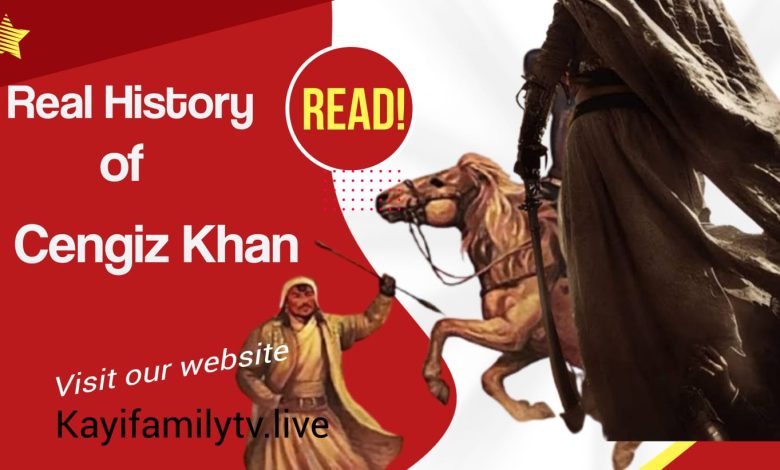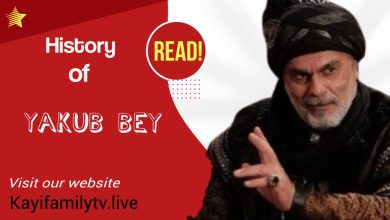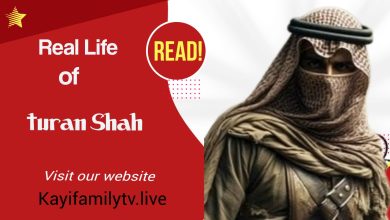Life of Genghis Khan

Biography of Genghis Khan
Real Life of Genghis Khan
The history of the world has produced some warriors and rulers whose stories of expansion and valor have become almost legendary. Ruler Genghis Khan (Genghis Khan) is such a hero. Genghis Khan is known as the founder of the Mongol Empire and is still remembered today as a legendary warrior.
This world conqueror known as Genghis Khan is known to the whole world. He united the Mongol clans and founded the Mongol Empire. It was the largest empire in the world in recent history. He was born into the Borzhigin clan of Mongolia. A simple clan leader raised a huge army under his leadership.
Although Genghis Khan is known as a ruthless and bloodthirsty conqueror in some parts of the world, he is respected and loved by all in Mongolia. He is called the father of Mongol nation. Genghis united the many nomadic ethnic groups of eastern and central Mongolia under a common social identity, the Mongols, before he became a khan.
Name – Birth and Ancestry:
This world conqueror was born with the name “Temujin”. Historians differ on the birth year of Genghis. Some think 1155, some 1162, some consider 1167 as the correct year of birth. Historians also speculate that Genghis Khan was born near the Onon and Harlen (Kherulen) rivers in the mountainous area of Burhan Haldun in the Henty province of Mongolia.
Childhood- Early Life and Marriage:
His childhood was eventful. This leader grew up in the midst of many setbacks. The adversities of his childhood were gradually building him up for the future. Genghis’s hardness of character was evident from childhood. Temujin, a perfect archer, killed his half-brother when he was only thirteen years old. The reason for the killing is very little.
Argument over sharing of food. Learned horse riding in childhood. At the age of six, he was allowed to join his tribe on a hunting expedition. At the age of nine, his father was poisoned and his entire family was displaced. He emerged as the head of the family by learning from his mother.
He learned the art of protecting others. At the age of 17, this brave Dapute brought home his child bride Borte. Borte was the first and last love of the polygamous Genghis, despite thousands of women in his life. Despite being the father of numerous children, he only named Borte’s four sons as heirs. This love of Borte and Temujin is unique in history. Surviving are the four sons of Genghis born to Bort, named Jochi, Tului, Ogedai, Chughtai Khan.
Winning state after state:
The destruction of the Mongols has emerged in the artist’s imagination: – After 40-50 years of age, Genghis Khan came out to conquer the world. The method of conquering the kingdom was horrific. Before conquering a city, the people of that city were ordered to surrender unconditionally. If they didn’t accept it, there would be a siege, then starvation, and surprise attacks on the townspeople.
None of the women, men, or children could escape the brutality of the Mongols. The areas the Mongols raided were desolate, first defeating the Jin Dynasty. It was from China that he learned the basics of military diplomacy. Western Xia, the Jin dynasty of northern China, the Khorezmian Empire of Persia, and parts of Eurasia were occupied in turn.
The territories conquered by the Mongol Empire are modern: Republic of China, Mongolia, Russia, Azerbaijan, Armenia, Georgia, Iraq, Iran, Turkey, Kazakhstan, Kyrgyzstan, Uzbekistan, Tajikistan, Afghanistan, Turkmenistan, South Korea, North Korea and Kuwait, plus many other states.
After Genghis Khan died, his sons and grandsons ruled the Mongol Empire for about 150 years. It is estimated that about 40 million people died in various campaigns of Genghis Khan, which is about 11 percent of the total population of the world at that time.
The Mongol Empire was divided into 4 provinces:
Il-Khanat: Persia, parts of Turkey, Azerbaijan, Armenia, Afghanistan, Turkmenistan, Iraq, Georgia, Syria, parts of Russia.
Golden Horde: It extended to Eastern Europe, Siberia, Caucasus region and the Black Sea. Georgia, Tajikistan, Kazakhstan, Turkmenistan, Uzbekistan, parts of Russia, Moldova, Ukraine.
Chagatai Khanate: Kyrgyzstan, parts of China, Uzbekistan, Tajikistan, Kazakhstan, Afghanistan, parts of Pakistan, Turkmenistan, Mongolia and parts of India.
Yuan Dynasty: Present-day China. Except for this young monarchy, the rulers of the remaining three khanates embraced Islam. The legendary Kublai Khan was the Khan of this monarchy and the Great Khan elected by other Khans. Although Genghis Khan’s empire was divided between his 4 sons, there was mutual communication and cooperation between them.
The contemporary Muslim world at that time: – Mamluks or Das Sultans were ruling independently in Egypt. The Umayyads in Spain are on the decline. Iran, Syria, Baghdad and the Muslim areas of Central Asia were then under the Mongols.
Islam among the descendants of Genghis Khan:
Baghdad was destroyed by Genghis Khan’s grandson Halaku Khan in 1258 AD. According to various sources, about 8 lakh people were brutally killed then. Many believe that this devastation was the result of the Abbasids’ own actions and that it was their fault.
One by one, different countries and lands were lost to the Muslims, but the Muslims could not take revenge on any caliph. But surprisingly, the one who strongly protested the destruction of Baghdad and vowed to inflict severe punishment on Halaku Khan in retaliation was Berke Khan, a Mongol and Halaku Khan’s cousin (Berke Khan: 1209-1266).
As promised, he waged several battles against Halaku Khan in which Halaku Khan was defeated. As a result, Halaku Khan could not advance against the Mamluk dynasty of Egypt. The Muslim historian Rashid Uddin Hamadani quotes Barke Khan as saying, “Halaku Khan has destroyed all the cities of the Muslims and killed the Caliph, with the help of Allah I will take from him the blood of these innocent people.” He kept his word.
Death:
Historians believe that Genghis Khan died on 25 August 1227 during the Tangut invasion of the Western Zia Empire. Many others consider August 18 as the date of his death. However, the cause of death is uncertain.
Many speculate that he fell from his horse due to old age and physical exhaustion. Some say it was the Tanguts who killed him. Another theory is that a Tangut princess killed Genghis with a mysterious knife to prevent rape and to avenge her imperial family. His body was probably buried somewhere near the Onon River in his native land.
History of the tomb:
It is still not known where his tomb is! However, scientists are conducting thousands of researches to find the tomb. After his death, according to his last wish, he was buried in an unknown place in Mongolia. According to various studies, it is suspected that his grave is in China or Mongolia, but the truth of this is still not known. According to popular information, the soldiers have removed all traces of Genghis Khan’s tomb. For this they drove a thousand horses over the tomb. Experts have tried to locate Genghis Khan’s tomb based on the descriptions of historians.
What is in Genghis Khan’s tomb?
How much truth is not known, it is believed that half of the world’s wealth is buried in the tomb of this great person. All the treasures of Genghis Khan and even the crowns of 78 kings are kept there. A Japanese archaeologist once ventured to find the tomb. He failed like others.





